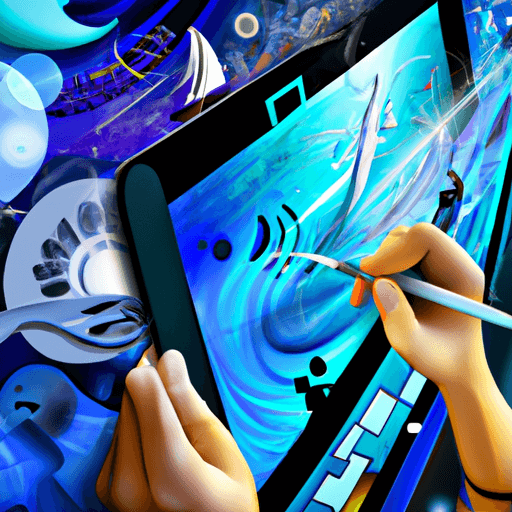The Impact of Digital Technology on Contemporary Art
Throughout history, the evolution of art has been profoundly shaped by technological innovation. Unquestionably, the dawn of digital technology has created a seismic shift in artistic practices, introducing new mediums for creation, expression, and dissemination, thereby catalyzing a remarkable transformation in the arena of contemporary art.
Digital Technology Influencing Artistic Practices
From digital imaging to 3D printing, virtual reality, and artificial intelligence, these modern tools have become instruments in the hands of artists, enabling them to push the boundaries of their creative imagination. Digital imaging, for instance, has allowed artists to manipulate images in previously unimaginable ways, creating layers of complexity and depth that redefine conventional notions of visual art. 3D printing, on the other hand, has revolutionized sculptural practices, broadening the scope of what is physically constructible.
Virtual Reality and Artificial Intelligence in Art
Virtual reality offers fully immersive artistic experiences, blurring the line between the artist, the artwork, and the audience, ultimately challenging our traditional understanding of art as an interactive element. Meanwhile, artificial intelligence is reshaping the artistic process by introducing a non-human agent in the creation of art, calling into question the long-standing association of art with human creativity and emotion.
Key Transformations and Trends in Contemporary Art
The use of digital technology in art has led to novel forms of artistic expression, such as digital installations, virtual sculptures, digital painting, and AI-generated art. It has fostered greater experimentation and innovation, leading to the emergence of new genres and styles and compelling dialogues between traditional and digital forms. The digitization of art also allows for greater accessibility, with online galleries and virtual tours making art universally accessible.
The Democratization of Art
Fundamentally, digital technology has democratized the art world. The barriers to entry have been significantly lowered, as anyone with a computer or a smartphone can create and share art. Furthermore, social media platforms have become prominent avenues for artists to display their work and engage with their audience.
The Future of Contemporary Art in the Digital Age
As we delve deeper into the digital age, we can expect the boundary between technology and art to become increasingly nebulous. Digital technologies will continue to instigate new forms, techniques, and conceptions of art, enhancing the capacity for artistic innovation. With the advent of phenomena like NFTs and the metaverse, it is clear that the digital realm will continue to redefine not just the creation, but also the consumption and commercialization of art.




















Comments
Leave a Comment